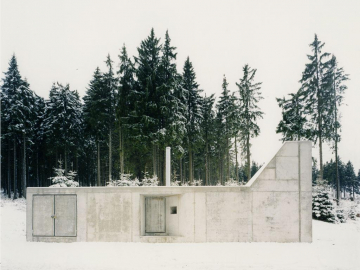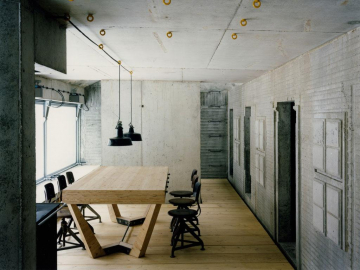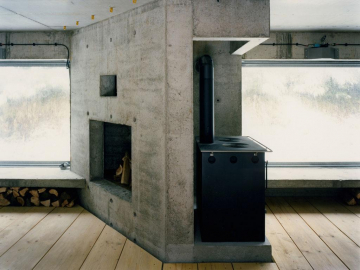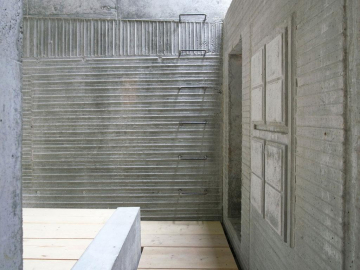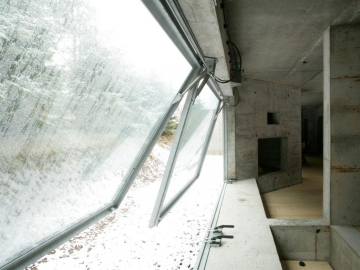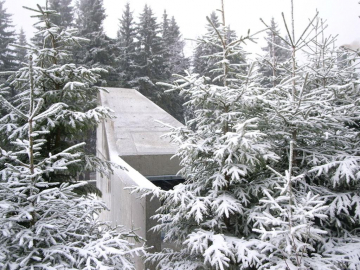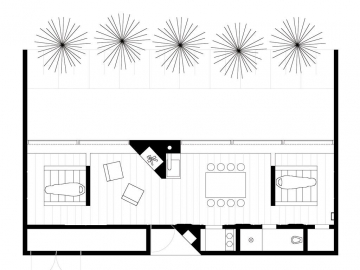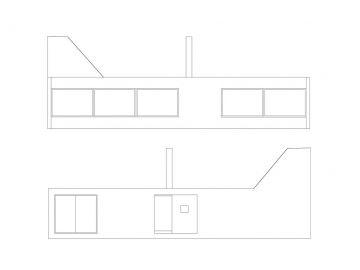Protective Hut on Fichtelberg Mountain
The hut appears to have been wrestled from the surrounding landscape, a concrete sculpture at the side of the road from Rittersgrün and Oberwiesenthal through the Ore Mountains in Saxony.
Inside, it is more back to the roots than back to the future - the hut preserves the imprint of its predecessor like a patina. The act of decoding and discovering the relief-like markings of the form and surface of the former wooden hut, which was abandoned to its own fate, is reminiscent of a hunter following tracks in the forest.This mountain hut, which offers catering facilities and accommodation for six to eight people on less than 30 squaremetre, is simple, spartan and the quality of the details is derived solely from tangible things. Walls and ceilings are formed in concrete; the wooden floor boards are made from locally cut spruce trees; fittings like switches, lights, chairs and wash basins are made of recycled components, the stoves are steel and the windows are generously proportioned. Unostentatious and sparse from a technical, functional and aesthetic point of view, the mountain hut performs its tasks efficiently and without daring technical features. The concrete structure opens only to the forest, like a bus stop opens only to the street, always in the direction of the intended destination.
The type bungalow, originally built as a weekend home and subsequently used as locker rooms by the Dynamo sport club, contributes a mould as a material substrate to form the new, recognisable exterior, a reference to the legibility of history. Saving the past shows the relationship of the hut to its substrate it accompanies us from the past to the future as a technical lantern slide.With its tough climate, nature is a hard task master on Fichtelberg Mountain. The function, use and material must be designed to withstand these conditions. The hut seeks a solution within this debate which cannot be accused of being a passing fad. Its silhouette in the dynamic system of its environment is neither emphatically traditional nor does it strive to be avant-garde. Even though the hut represents a departure from the original local tradition, it remains a courageous re-interpretation of the typology of a traditional hut. In any case, it has the appeal of quality architecture, which has the power to attract townspeople to a remote village with more carved wooden Christmas decorations than residents.

